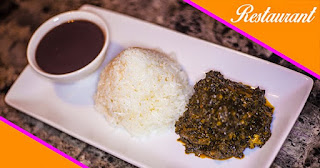Haitian cuisine is a vibrant tapestry of flavors, deeply rooted in the island's history, culture, and natural bounty. From aromatic spices to tropical fruits, Haitian dishes offer a unique culinary experience that reflects the country's diverse influences and traditions. **A Fusion of Influences** At the heart of Haitian cuisine lies a blend of African, French, Indigenous Taíno, and Spanish culinary influences. This fusion of flavors and cooking techniques has resulted in dishes that are both comforting and bold in taste. **Staple Ingredients** Rice and beans are fundamental to Haitian meals, often served alongside various meats or vegetables. Plantains, yams, and corn are also widely used, reflecting the country's agricultural abundance. Seafood is plentiful due to Haiti's coastal location, with fish, shrimp, and lobster featuring prominently in coastal regions. **Signature Dishes** One of the most iconic Haitian dishes is Griot, marinated and fried pork served with pikliz, a spicy slaw made from pickled vegetables. Accra, a popular street food, consists of crispy fritters made from malanga (taro) or codfish. Another beloved dish is Tassot, fried goat meat seasoned with citrus and spices, offering a delightful balance of tangy and savory flavors. **Spices and Sauces** Haitian cuisine is renowned for its bold use of spices such as cloves, cinnamon, and thyme, along with the distinct heat of Scotch bonnet peppers. Epis, a versatile seasoning base made from garlic, onions, peppers, and herbs, forms the foundation of many Haitian dishes, enhancing their depth and complexity. **Desserts and Beverages** Sweet treats in Haiti often feature tropical fruits like mangoes and papayas, either enjoyed fresh or incorporated into desserts like tèt bèlè (coconut milk custard) or pen patat (sweet potato pudding). Sorrel, a refreshing drink made from hibiscus flowers, and the ubiquitous Haitian rum, Barbancourt, are popular beverage choices. **Cultural Significance** Food in Haiti is more than sustenance; it's a cultural expression that brings communities together. Sharing meals is a cherished tradition, with gatherings often accompanied by lively music and dance, embodying the spirit of Haitian hospitality and warmth. **Challenges and Resilience** Despite its rich culinary heritage, Haiti faces challenges such as food insecurity and economic hardships, exacerbated by natural disasters and political instability. However, initiatives promoting sustainable agriculture and culinary tourism aim to showcase Haitian cuisine's diversity while supporting local communities. **The Future of Haitian Cuisine** As Haitian chefs and entrepreneurs continue to innovate and preserve traditional recipes, the future of Haitian cuisine looks promising. Through global awareness and appreciation, Haitian food can not only delight palates worldwide but also serve as a testament to Haiti's resilience and rich cultural heritage. In conclusion, Haitian cuisine is a vibrant celebration of flavors, history, and community. From its savory stews to its refreshing beverages, every dish tells a story of resilience and cultural pride. Exploring Haitian food is not just a culinary journey but a glimpse into the soul of a nation, where every meal is a testament to the beauty of diversity and the joy of shared meals.




0 comments:
Post a Comment